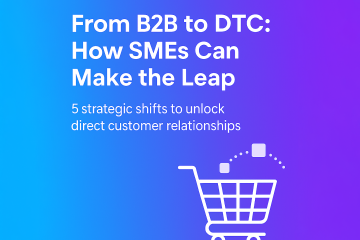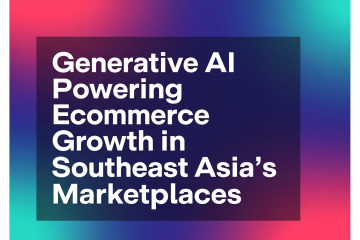Shopping Used to Be an Event
As consumers, we’re always conditioned to consume through a number of signals from companies. After all, without consumerism, much of our economy won’t exist and most of us probably won’t have a job.
Back in the olden days, consumerism tends to focus on thematic periods that justify spending.
This could be the classic holiday season, birthdays, graduation, weddings, and similar peaks spread throughout the entire year. This event-based relationship with shopping tends to make us think more carefully about what we buy, especially during cash/cheque-dependent days.

However, today’s shopping malls and commercial areas blanket every corner in most metropolises, and the prevalence of credit-based shopping made impulse purchases easier than ever. Efficiencies in production and globalization also contributed to most non-essential goods being more accessible to purchase than ever.
eCommerce: Consumerism on Steroids
The internet has made it easier than ever for us to spend money on things. However, up until recently, online shopping was still predominantly an event-based shopping event and not a habitual ritual.
Just 15-20 years ago, spontaneous, impulsive buying was confined within the realms of eBay for thematic, obscure, specialist items targeting hobbyists, collectors, or people trying to find items they can’t buy offline.
Up until 2015 or so, eCommerce merely offered a wider variety of goods, replacing traditional mail order and TV shopping with much more efficiency and scalability.
As internet speed and access became cheaper and social media integrated into our daily lives, companies now can expose us to a barrage of advertisements informing us of things we should buy even if we never knew the product existed seconds ago.

The explosion of eCommerce growth in recent years brought forth an endless display shelf for us to shop and our demands to satiate this appetite extends from product variety to delivery speed.
However, the rails have been set for this high-speed train to blast through.
Logistics and Supply Chain Nitro Boost
The e-commerce market has been flourishing in recent years. With the growing demand for online shopping, constant product release, and ever-improving delivery speeds, online stores must continually stay up to date with the latest updates to remain competitive.
Online shopping is growing exponentially, with eCommerce sales expected to reach 5.4 trillion US dollars in 2022 according to Statista. A key growth driver is due to efficiencies in supply chain and logistics, including last-mile deliveries. Companies are developing new technology and policies to optimize the shipping process.
Back in the olden days of 2010, “fast” delivery is 3-5 days as 7-14 days were considered as “regular” shipping. Nowadays, 3-5 days are for chumps as many offer next day as standard and even same-day shipping if you get a membership of some sort.

That’s ridiculously fast and it has been GREAT for consumers like you and me. It allows companies to sell more goods, and eCommerce websites to attract more and more buyers away from brick and mortar offline stores.
Everybody wins, right?
Our Convenience Relies on Sweatshop Delivery Processes – and Consumers Caused It
This may very well be a controversial statement, especially from someone who directly works in the eCommerce space. Unfortunately, our insatiable need to get our goods quicker, faster, NOW has resulted in the inevitable – labour exploitation, particularly with last-mile delivery.
In most countries, the majority of eCommerce last-mile delivery (defined as the last leg of a journey comprising the movement of people and goods from a transportation hub to a final destination, according to Wikipedia) is no longer done by the traditional providers like your postal service or the larger courier companies due to cost, profitability, and labour union restrictions.
This high-demand service is often catered by start-up disruptor businesses that utilize crowd-sourcing, gig-economy workers to fulfill the overflowing pipeline of goods from distribution centres and warehouses to our doorstep.
As fully-autonomous robotics aren’t ready for this task yet, we’re still resorting to traditional means of delivering goods but companies have shifted the costs to the workers instead of putting up the investment upfront.
In many countries, vehicles, petrol, maintenance, insurance, retirement pension, and other associated costs of service are passed to the workers themselves. The pay rates are shouldered by either the vendor or the end consumer mostly, neither of which gain direct value for paying more due to margins or cost of purchase concerns, respectively.
It’s A Global Problem
Here are a few series of videos highlighting the plight of these workers and how nonchalant companies that employ them or the consumers that receive the packages can be.
And so forth… There has to be a better way, right?
While Technology is Catching Up, Consumer Behavior Can Influence Change
I’m not going to lie, I’m a huge supporter and consumer of eCommerce retail. I’ve been buying online since the first dot-com era, buying books from Barnes and Noble, ordered my IOMEGA Zip drive online when I saw an ad on PC Magazine in 1997, even started my own eCommerce store selling airsoft guns and accessories in 99, so I’m 100% all-in for eCommerce.
However, in order for eCommerce to be sustainable, profitable, and perhaps, more ethical, long-term, we need to address where the gaps are across the supply chain and purchasing journey.
As consumers, there isn’t much that you can control when it comes to how online stores are designed, how the product flows through the supply chain, how much margins companies need to make, but our demands on delivery expectations can influence business decisions.
Here are some ideas we can consider as consumers when placing our orders if the checkout process allows you to choose these options:
- How about going back to a standard 5-7 day delivery window for non-perishables and non-grocery items?
- Paying a premium for shorter delivery time (beyond memberships)
- Opting for centralized pick-up points or click-and-collect option instead of doorstep delivery
- Buy from sites that can consolidate your orders in one package rather than individual shipment
If you have the power to influence at a higher level, perhaps you’re working for some of the largest eCommerce sites in your market, or you’re running a direct-to-consumer eCommerce website, consider communicating your vision and obtain positive buy-in from within the company and with your best customers
Consumer Behavior Drives Company Decisions
Ultimately, the marketplaces, D2C operators, supply chain, and logistics companies adapt and respond to our demands and behaviors as consumers.
If our constant demand for instant gratification for goods we don’t really need the immediacy for, same-day or even 1-3 hour deliveries will undoubtedly become the norm and we need to ask, “at what cost?”
Sure, automation, robotics, and AI will make things easier, but we’re years and years away from practical reality. Accelerating these technologies will also provide less time for our current pool of last-mile partners from catching up to the tech and figuring out how they can continue to be a part of the ecosystem.
Is lowering our consumer demands on deliveries too much to ask in exchange for instant gratification? Will it really move the needle to make work fairer for last-mile workers? Maybe, maybe not.
However, at its core, it’s also a good wake-up call for us at an individual level to slow down and give our purchases more thought before we click that “Add to Cart” button.



0 Comments